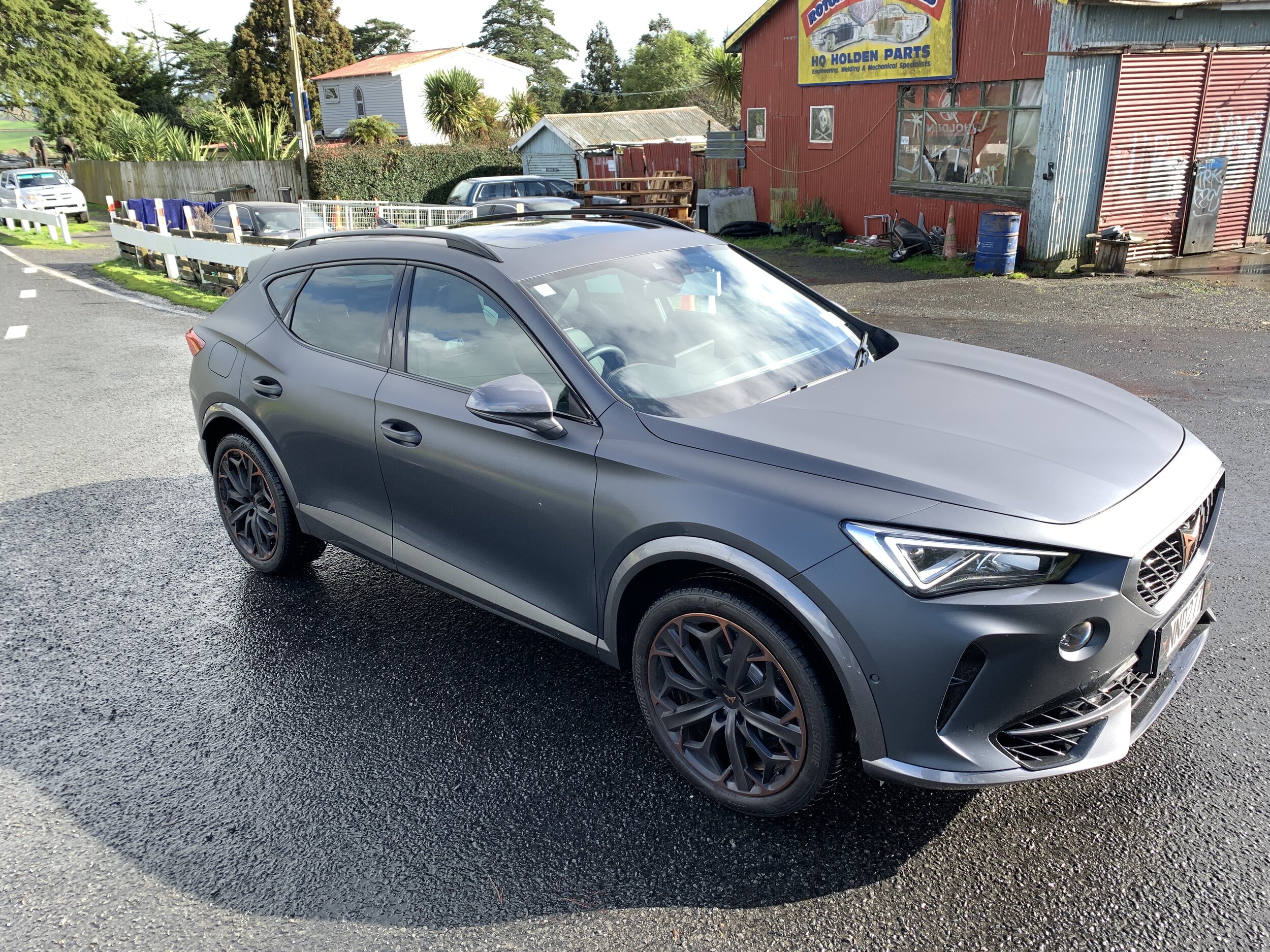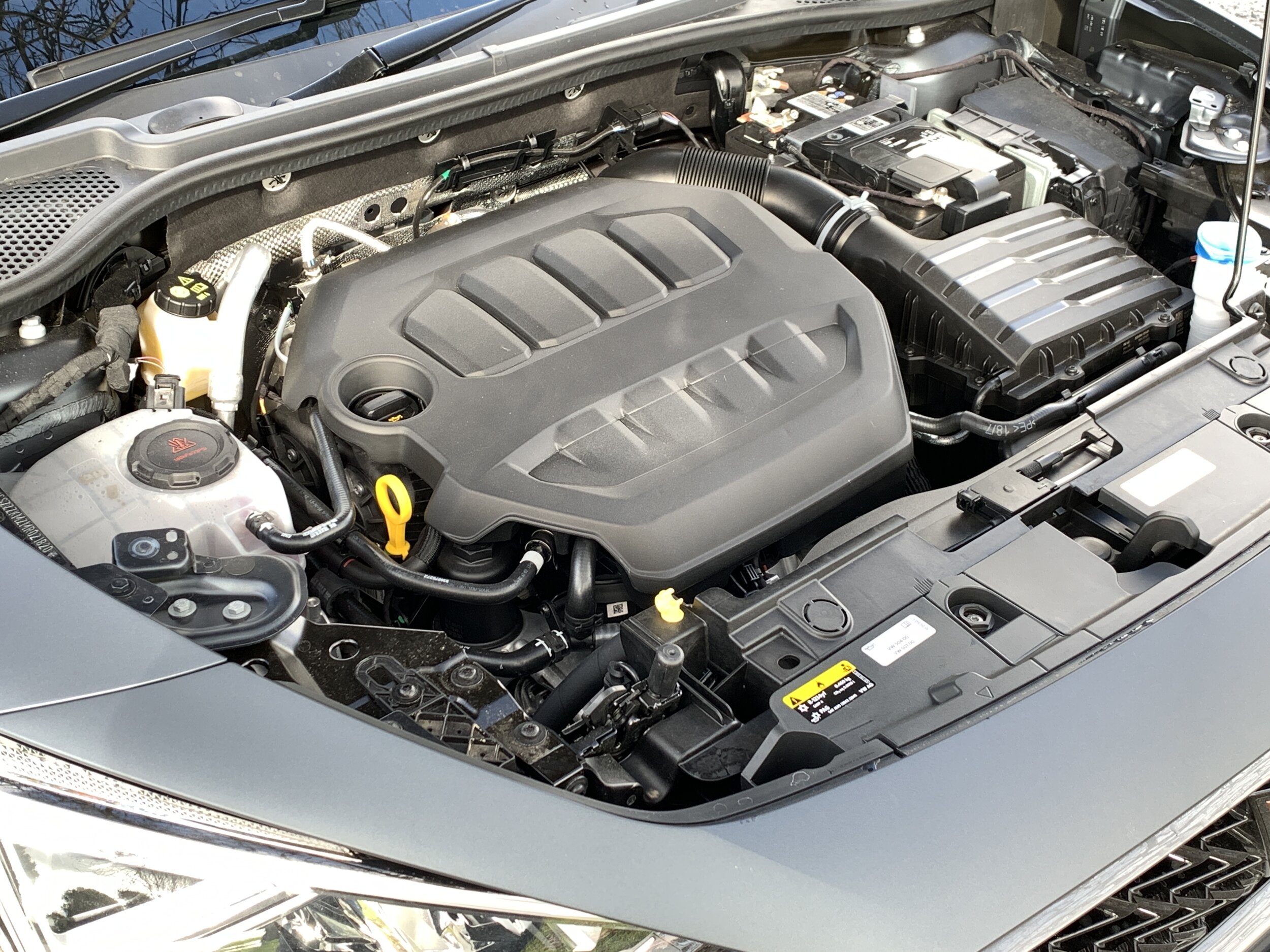Cupra Formentor first drive review: Hot cross fun
/SEAT’s spin-off brand has its own standalone model. Ay caramba!
WHAT a relief for Cupra to finally have a car that stands no chance of being mis-identified as a Volkswagen, a Skoda or anything else from the VW Group. Including its direct parent, actually.
Long used as a sign of SEAT's performance-focused cars, Cupra three years ago become a new brand with its own distinct identity, able to chase its own destiny with free reign to do what it wants.
Well, ‘free’ with one caveat. As per convention, it had to forge on with gear it really couldn’t truly call it’s own. In usual VW Group style, all its cars are largely clones of mainstream VW product.
So what’s different with the just-arrived Formentor, a five-chair performance crossover which has just landed in $54,900 V4Drive and $68,900 VZ editions and will follow in a sub-$50k V front-drive entry form and as a plug-in hybrid?
Technically-speaking, nothing at all.
The running gear is all from Wolfsburg, so the platform is MQB and the drivetrains are turbopetrols that have underpinned umpteen different VW Group cars. Underneath is an all-wheel-drive system and seven-speed dual-clutch DSG transmission, both just as well known.
Put all that aside, though, and it’s truly NOT like any other Cupra, or SEAT, you’ve seen because … well, just look at it, right?
Design-wise, this a product with the loosest possible ties to VW Group preference for issuing the same products behind different badges, with just enough restyling to suggest individuality. There’s nothing else in the whole wider family – including even from Porsche and Audi – that delivers in this coupe-crossover design format.
A strength? You betcha, says brand boss James Yates. “It’s key for us is that’s unique and won’t be shared with SEAT, let alone VW, Skoda and Audi.”
In addition to being as bespoke as VW’s formula allows, it’s the closest thing now to being what SEAT was before being subsumed into VW ownership back in 1986: A genuinely Spanish product.
In that it’s built in that country (not all Cupras are) and the designer, Alejandro Mesonero-Romanos Aguilar, is a native (born in Madrid in 1968). He’s now with Renault, but still … if you get hung up on Spanish flair, the one and only Cupra he can be credited with having fully shaped is a great example.
If you have to put any kind of tag on it, I guess you’d define Formentor as a 'coupe-SUV' equivalent of the Ateca’s hatchback-SUV., though it looks quite different and, frankly, even better. More muscular, more angular, with a nice stance and awesome proportions. The one surprise about finally seeing it in the metal instead of in images is that it's lower and smaller than expected. Yet, all in all, a total cracker. Most other companies that have tried to design a 'coupe-SUV' could learn from it.
The drama dilutes a touch within the cabin. Yet as much as it is obviously built to VW Group specifications and has bits and bobs familiar to all Audi-through-to-Volkswagen customers, there’s quite a lot of proudly-different embellishment. Mainly it’s in the detailing – bronzed highlights and that Transformer-like brand logo ( back-to-back Cs proposed as a tribal tattoo, because that’s how SEAT reckons the owner group should regard themselves as: A tribe) are Cupra 101. But even some switchgear, the diddy gear selector (same as in the VW Golf 8, though Cupra achieved it first) and infotainment logics are more bespoke than they might have needed to be.
It’s the kind of car that will provoke conversation, which bodes well for a brand that, let’s face it, still isn’t much of a talking point with even car enthusiasts; Cupra cars (and SEATs) are rare sights in most parts of the country.
Will the model named after a peninsula on the Spanish island of Majorca raise the make’s stature and our awareness? I can’t see why not.
Formentor was only revealed in production form 13 months ago, having been previewed as a near-production concept at the 2019 Geneva Motor Show, and New Zealand seems to be just the second right-hand-drive destination for it, after the United Kingdom.
The sporting theme sees it start with 2.0-litre turbopetrols, in 140kW/320Nm tune with the V4Drive and a more serious 228kW/400Nm with the VZ, both mated to seven-speed direct shift transmissions and in all-wheel-drive.
The VZ is the model I drove first, on great roads south of Auckland, steering well clear whenever possible of traffic wending down to the Mystery Creek Fieldays.
It’s wicked, as well it should be. VZ is shorthand for the Spanish word ‘veloz’, meaning fast; a fair call since this flagship takes the famous EA888 that powers seriously fast VWs and Audis.
Here it offers 0-100kmh in 4.9 seconds, so 2.2s quicker than the Formentor’s base engine, and a top speed of 250kmh, versus 220.
Fuel economy favours the lesser, with eight litres per 100km cited (as per the WLTP cycle) versus nine. The entry mill is also kinder on the environment, with a CO2 output of 182 grams per kilometre versus 203g/km.
Despite this car’s performance bent, Cupra isn’t oblivious to global change. It’s badge is on the Born fully electric car, potentially to arrive in late 2023, and there are also properly green-minded Formentors, with plug-in hybrid options, in 1.4-litre formats.
The more powerful of those – with 150kW combined power and 350Nm combined torque – is a slightly less oomph-rich version of a unit about to reach New Zealand in Skoda’s Superb iV. Electric-pure range of 53kms thanks to the 13kWh battery sounds intriguing. No price yet.
In its launch formats, Formentor already delivers in two distinct flavours; both appealing.
If you can stretch to the halo edition, go for it. One of the great things about Formentor is that both models look identical – save for the exhaust pipe count, two at base, four for VZ – so you can enjoy the flamboyance in equal dose.
Out on the road, though, it was clear why we were allocated a lot more time in the higher-priced edition. The V4Drive is fine, but its strengths are a decent dollop of mid-range torque, a quiet refinement and good ride.
Though both variants have Dynamic Chassis Control, VZ alone achieves a ‘Cupra’ setting that ultimately defines its character and worth.
The next step from ‘Sport’, which in itself certainly makes the car feel and sound more interesting, ‘Cupra’ is a significantly bullish setting for a car that starts out fast, capable and grippy.
You get full-blown vamoose from the engine and the steering, throttle and suspension responses also sharpen considerably.
Formentor is supposed to be a rapid coupe-SUV, rather than a hot hatchback, so I’m not sure how well it would compare in a shootout, but it’d be worth having a go.
In ‘Cupra’ Formentor becomes a real driver-first startlingly quick and balanced product that delivers a delicious exhaust rasp with over-run pops and bangs to egg you on. A surprise turn, perhaps, for a car that feels very much like a premium family-focussed product, but maybe that’s part of the attraction.
BTW, if any of the factory settings seem not quite right, you can dabble in the ‘Individual’ setting that that provisions 15 possible settings for the damping. There wasn’t the time on our day.
On the roads we hit, it was satisfying to take control of the gearbox using the paddles behind the steering wheel. Otherwise, depending on driving mode, it drops a few gears in search of high revs every time you ask for a bit more acceleration.
It doesn’t have to be a berserker. In both models, there’s also a ‘Comfort’ tune that makes it feels like a much larger and more affluent SUV than its compact platform might have you expect.
Yes, about the car’s size. The other aspect that might potentially sell Formentor is its format. SEAT/Cupra already has a medium SUV in the Ateca and it is 104mm taller and 2mm wider than the newbie. Yet the 4450mm long Formentor has a 50mm longer wheelbase, at 2680mm, so interior practicality remains high.
Also, the rakish roofline is deceptive; with the driver’s seat set for my tall frame, there was ample adult passenger room in the back, in part because the rear seats are set particularly low. This allows for excellent headroom though. The outer seats are more adult friendly, though, as the middle position is compromised by the transmission tunnel.
Boot capacity stands at 420 litres,, so around 65 litres less than the Ateca, but it rises to 1475 litres with the 60:40 split rear seats folded down.
Speaking of seats. Whereas the V4Motion has slight flat cloth/leather-clad front chairs, the VZ stumps up to a set of lovely big, form-fitting sports items.
It also reminds of its wild child pedigree with an upgraded steering wheel, with a moderately flat bottom item and big 'satellite' buttons for starting the engine and choosing the driving mode; plus more buttons to control many of the major functions. Busy? Yeah, kinda.
The instruments are digital and customisable and the 12-inch infotainment touchscreen in the middle is the latest Volkswagen Group item with finger sliders at the base for temperature and volume. This and the menu navigation is a bit fiddly, but probably not impossible to get on top of.
The strip of ambient lighting in the hoop-like structure that runs from the front of the door cards and around under the base of the windscreen is more than just to enhance the mood; it also includes the warning lights for the blind-spot monitoring (rather than them being housed in the door mirrors, as is usual).
A full pack of electronic driver-aid and safety gizmos span both models and the base car ticks the salient boxes in respect to comfort, but though both have quite a few options, the premium asked for the VZ pays off with a lot more features, thugh it can be optioned to a higher level of plushness. It’s sensible a full-length sunroof and matte paint are among ultimate cost extras; having driven a car with both I was unconvinced about the merits of either.
Cupra and SEAT products are evenly represented here in respect to product counts, but the first is far more favoured in respect to sales volume. Of course, these are the most niche of VW Group’s mainstream brands, so those tallies don’t come to much in comparison to how even Skoda performs, let alone VW.
Even so, the appeal here is genuine flair; pretty much all of the ‘clone’ models have this. But you’d have to think the Formentor gives Cupra all the more of a fighting chance.






















